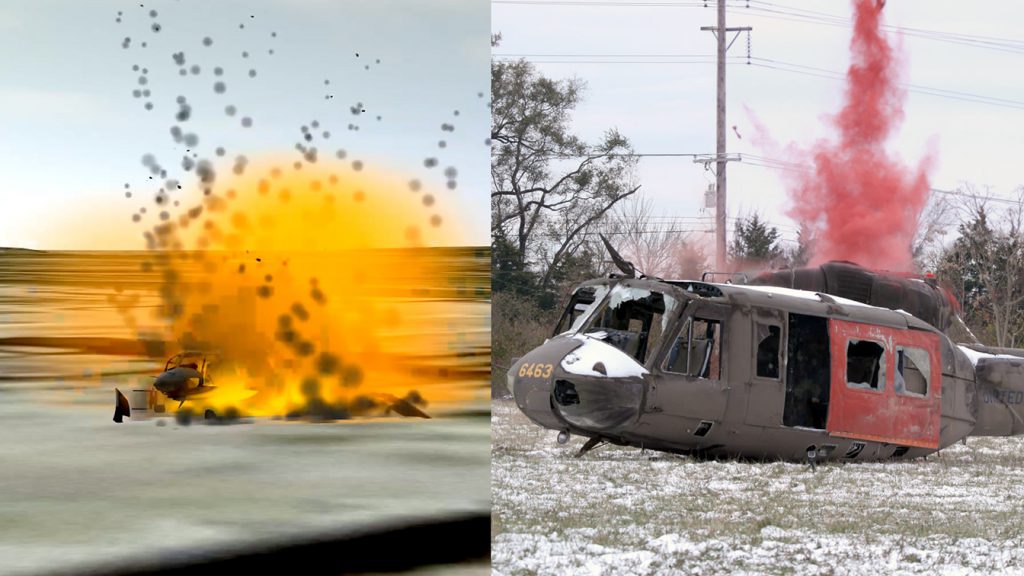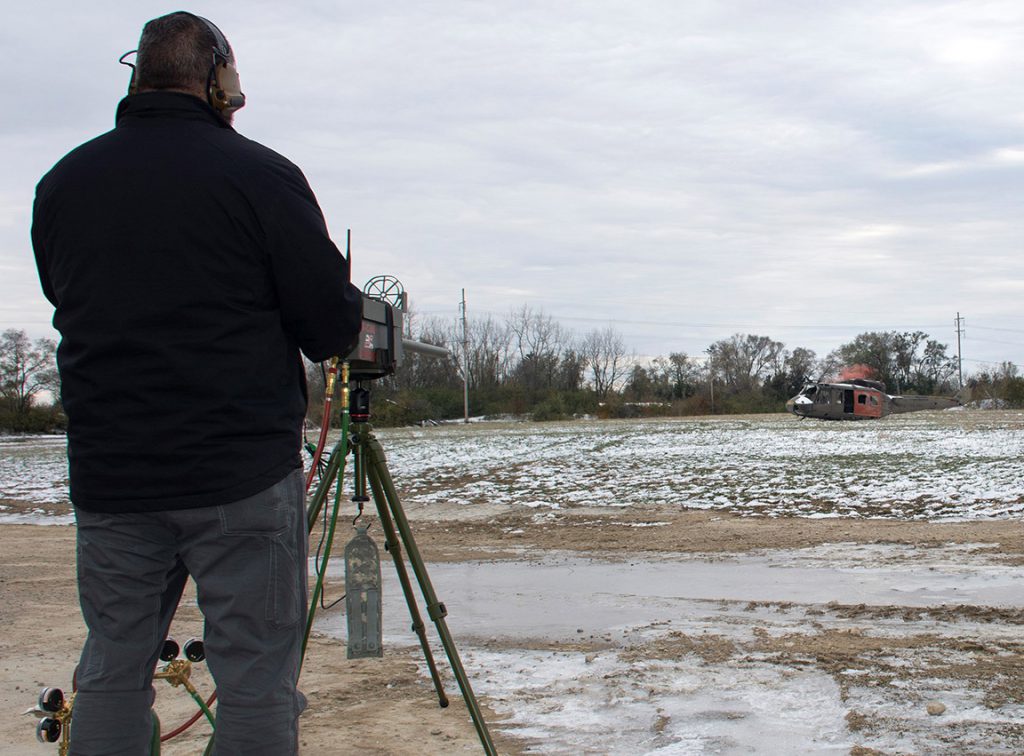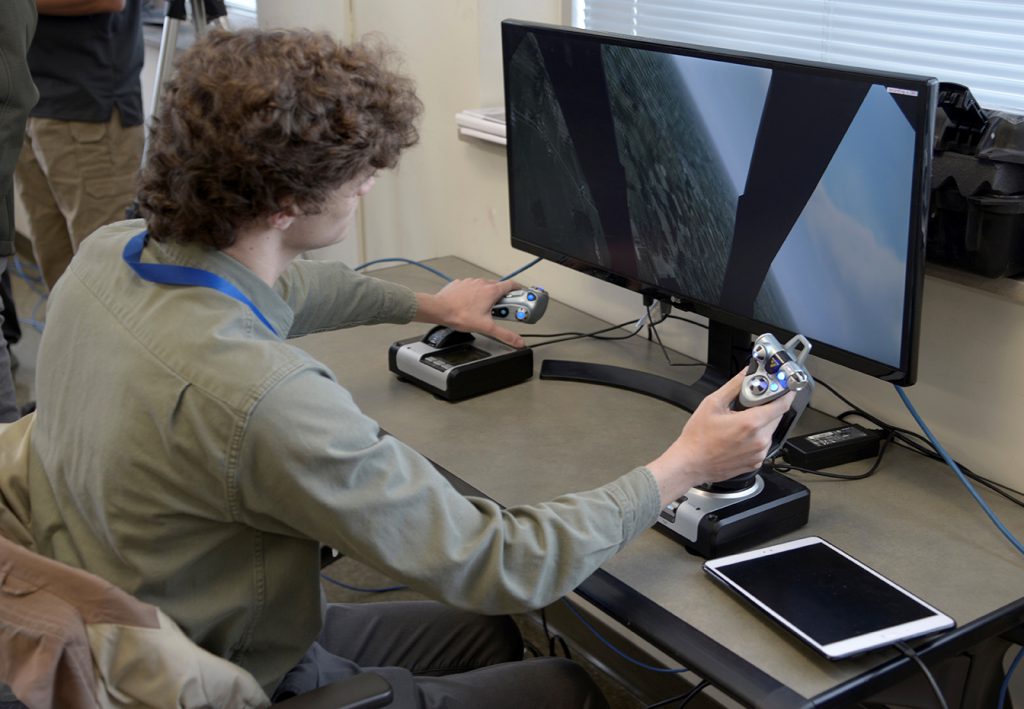FAIRBORN, Ohio – A team from Red Flag-Rescue had the opportunity to watch a demonstration of the Air Force Research Laboratory’s live virtual constructive training capabilities at the National Center for Medical Readiness in Fairborn, Ohio, Nov. 14.
Under Detachment 1 of the 414th Combat Training Squadron, Red Flag-Rescue is the Department of Defense’s Joint Force exercise where Airmen partake in realistic combat search and rescue training in challenging contested and operationally limited environments.
“We were able to show the team proof of concept by sharing the capabilities to show different ways LVC can interact,” said Ted Harmer, Medical Readiness and Personnel Recovery Training Research lead with AFRL’s 711th Human Performance Wing. “LVC can help solve problems, mitigate cost of training and eases scheduling of training participants.”
LVC incorporates live, virtual and constructive elements into one training environment. During a training scenario, people are physically operating equipment in real time parallel to the identically matched scenario with a computer-generated environment. The constructive element is the environment created for the particular training and includes computer generated people, models or game-type situational simulations.
Harmer said LVC is leveraging all the technologies the 711th Human Performance Wing’s warfighter readiness experts have produced.
Cedric Stark, Red Flag contract site lead who observed the demonstrations, was impressed with the capabilities of LVC and said it can be applied to Red Flag Rescue.
“I enjoyed the demonstration as it showed the Live, Virtual and Constructive future of Red Flag Rescue. Seeing the future opportunities in the virtual realm, such as fighter simulators operating from their stations but will plan, brief, execute and debrief as if we were together is staggering, said Stark. “This is a game changer, a force multiplier for us, as it increases our ability to integrate distributed joint airpower and enhance our ability to train contested Combat Search and Rescue missions.”
Harmer said one of the challenges in training is the difficulty of getting all the Combat Air Forces players together to create the environment needed in order to train. He added for instance, strike assets, because of deployment schedules and their own required training, they do not always have the availability to support such training events. LVC allows the potential for them to fly and interact in a constructive or synthetic simulation capability.
“We are applying all the simulation and LVC tools in a different way,” said Harmer. “The exercise has 90 percent of the simulation capabilities of what we just demonstrated here. We integrated them in a different fashion, showing them the possibilities of where they can take their training capabilities to.”
Harmer said AFRL already has an active partnership with the Red Flag-Rescue exercise by capturing training data to provide proficiency based performance and readiness metrics to enable COMACC’s Future Training Concept.
“AFRL, Ted and his team have made a huge difference with bringing in their team to Red Flag,” said Stark. “They are giving us the capability to record events and pull a great deal of data so we can in turn give a much effective debrief to increase better learning. They helped us more than you can imagine over the last three years.”
Red-Flag Rescue is located at Air Combat Command’s 57th Wing at Nellis AFB., Nev., and training exercises are held at Davis-Monthan AFB, Ariz., twice a year.

Constructive and live helicopters explode simultaneously after a strike by a virtual A-10 during a demonstration at the National Center for Medical Readiness in Fairborn, Ohio, Nov. 14. The mirrored constructive and live simulation effects create a more relevant and realistic training experience. (U.S. Air Force graphic)

Red Flag-Rescue exercise integration manager Ed Neeley, fires a .50 cal machine gun simulator at a helicopter during a demonstration at the National Center for Medical Readiness in Fairborn, Ohio, Nov. 14. Using sensors to track the fire in the constructive space, an improvised explosive device simulator on the helicopter explodes after sensing the hit. (U.S. Air Force photo/Will Graver)

Bob Theimer, Air Force Research Laboratory software engineer, pilots a virtual aircraft to begin a demonstration using live, virtual and constructive elements into one training environment. During a training scenario, people are physically operating equipment in real time parallel to the identically matched scenario with a computer-generated environment. (U.S. Air Force photo/John Van Winkle)
